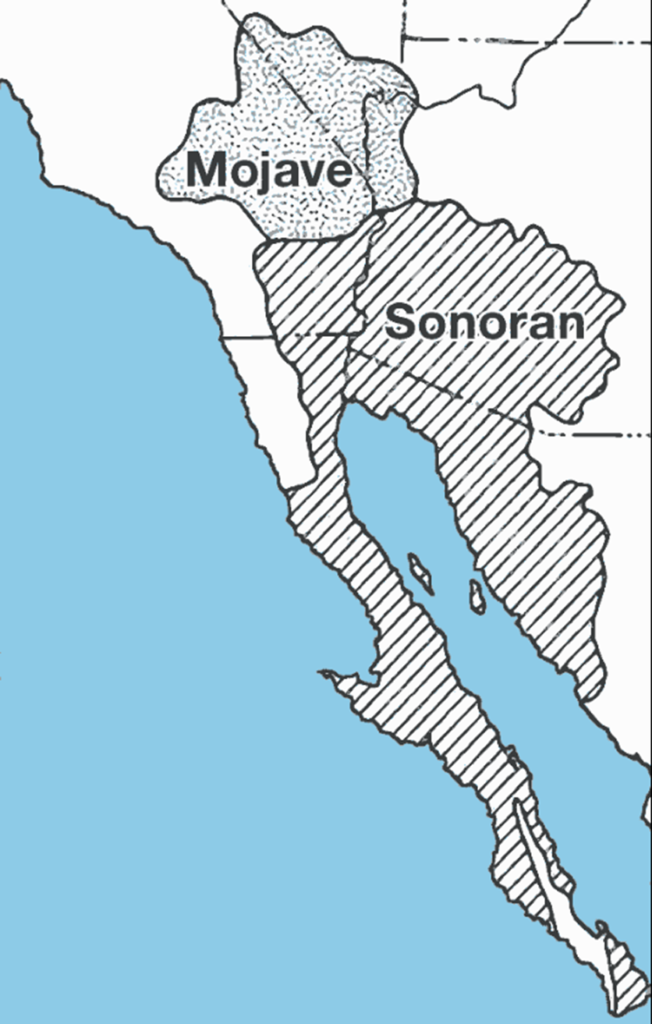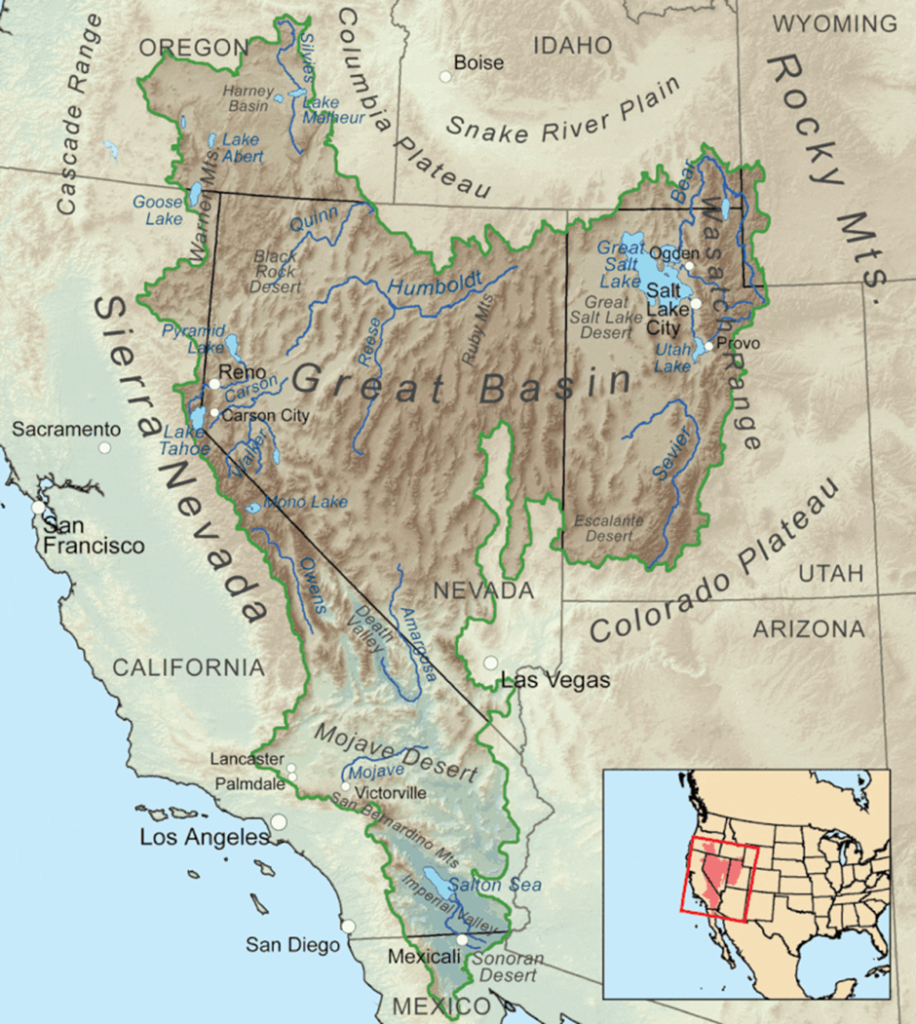For many of us, the concept of a desert region doesn’t fit the true definition. Mention a desert to some, and the image of the great Sahara desert in Africa comes to mind.
However, the concept of miles and miles of huge wind-blown dunes devoid of any kind of life doesn’t really fit the true definition of a desert.
Officially, a desert is considered an arid area with sparse vegetation. Most experts consider any area that receives less than 10 inches of sporadic rainfall and has a very warm climate to be a desert. In the United States, approximately one-fourth of the geographical land mass of the continent is considered to be desert.
What must be remembered is that many indigenous people made these areas their homes for thousands of years. The desert regions in the U.S. can certainly provide food sources if you know where to look and for what to look. In a desert survival situation, three elements are critical:
- Water
- Shelter
- Food sources
These three elements make up the “Survival Triangle.”
SKIP AHEAD
The Great American Deserts
If you are facing a survival situation in one of the North American deserts, it is important to understand the terrain, environment, and ecology of the area. In general, North America has four deserts. These ecoregions range from the typical “extremely hot and dry” desert areas to what are considered cold deserts. The plants, animals, and challenges associated with each type of desert differ considerably.
The Chihuahuan Desert
The Chihuahuan desert is the largest hot desert in North America. It is located in the Southwestern United States and extends into Northern Mexico. The range of the Chihuahuan desert covers more than 140,00 square miles. Arizona, New Mexico and Southwestern Texas, as well as northern Mexico, all have portions of the Chihuahuan desert within their borders.
Despite its classification as a desert, the Chihuahuan Desert is a biologically diverse ecoregion that supports a variety of wildlife and plant species, many of which are edible. Typically, temperatures range from 90 degrees to 104 degrees during the summer months. It is known to freeze in many areas of the Chihuahuan Desert during the winter months, especially after dark.
The Sonoran Desert
The hottest desert in the North American Southwest is the Sonoran Desert. This vast region is located in Arizona and southern California, extending south to Mexico and the Baja Peninsula. The Sonoran Desert is technically an arid sub-tropical region that supports some unique plant and animal varieties not found elsewhere.
The Sonoran Desert supports a rich ecosystem of plants and animals that are uniquely suited to this harsh environment. Many plants in this desert can provide sustenance for humans. Perhaps, the biggest challenge of surviving in the Sonoran Desert is the extremes in temperature that can occur rapidly at almost any time of the year.
The Mojave Desert
The Mojave Desert rivals the Chihuahuan desert for the title of the hottest region on the North American continent. Spanning 22,000 square miles, the Mojave Desert lies entirely within the United States and ranges from western Arizona into southern Nevada and eastern California.
Death Valley is the lowest point in the United States and lies within the Mojave Desert region. Many parts of the Mojave Desert extend upwards to between 2,000 and 4,000 feet in elevation, giving this ecoregion one of the most expansive ranges of altitude of any desert in the world.
The Great Basin Desert
With an area of about 190,000 square miles and spreading through five states, the Great Basin Desert is considered a cold desert and differs from the other three great North American Deserts in both climate and ecology. The average elevation in the Great Basin Desert is 3,900 feet, where summer temperatures can reach over 90 degrees Fahrenheit during the day and drop to 40 degrees Fahrenheit at night on the same day.
The diversity of plants and animals in the Great Basin Desert is defined by the altitudes at which they are found. The Great Basin Desert contains a large number of mount peaks that can exceed 9,000 feet as well as vast low expanses where the ecology and climate support an entirely different eco habitat.
Desert Foods in North America
Surviving in a desert environment requires an understanding of desert edibles. Desert foods are not as scarce as many people believe, but turning some of the edible plants in the desert into a sustainable source of nourishment can be challenging.
Perhaps the biggest challenge is simply recognizing what plants are edible and which can be deadly.
Some plants are native to all of the American Deserts, which are some of the best wild edible plants. Some can be eaten raw, while others require some preparation. It is possible to find abundant food in the desert, provided you exercise some caution when dealing with wild foods.
North American Desert Food Foraging
The landscape of the North American Deserts is much more than just rocks and sand. This desert is, for the most part, a thriving ecosystem filled with plants and animals, many of which can be eaten or used medicinally. For the most part, the Chihuahuan desert is a landscape that is very much alive.
Prickly Pear Fruit
Anyone who has visited the southwestern portions of the United States has seen prickly pear cactus. The large thick pads of this cactus sport both huge long thorns and tiny spikes that protect the moist pads from casual grazing. In the late summer and fall, a prickly pear cactus bears fruit that resembles small pears.
The green fleshy pads of the prickly pear are considered a staple food source in many places. Called nopales in Spanish, the pads are traditionally boiled and served as a side dish or in salads.
The fruits of the prickly pear are sweet and are most often used in jellies and preserves. The cactus fruits can be eaten raw, but must be peeled thoroughly to avoid the thousands of tiny thorns which make it difficult to collect fruit from the prickly pear.
Cholla Cactus
Some varieties of Cholla Cactus are called jumping cactus. The joints on the plants are so easily separated that the lightest touch often leaves you with a hunk of cactus firmly attached to you or your clothing.
The Cholla cactus has several edible parts. The immature flower buds are often collected and eaten raw. The yellow flowers are also edible.
The ripe fruit of the Cholla cactus is said to taste a bit like strawberries, while the young non-woody joints can be eaten either raw or cooked. Some aficionados claim the prepared joints taste a bit like kiwi fruit. Take great care in harvesting parts of the Cholla cactus to avoid their painful spikes and thorns.
Yucca
The Yucca Plant is like finding a grocery store with roots. There aren’t many parts of this plant that can’t be utilized for food in some manner. As wild edibles go, Yucca has a long history as a mainstay food source for desert peoples in the Southwestern U.S.
The leaves look intimidating, but if they are peeled and boiled, they provide many nutrients. They are edible raw but can be tough to digest.
The roots of the yucca are also edible. If you do want to eat Yucca roots, you should boil them first. The roots can then be eaten as a paste or dried to make a sort of flour that can be reused in various ways. The fruits of the yucca are often eaten raw as a treat or grilled and served as a side dish.
Chia Sage
Often called the Desert Chia, these flowering plants tend to be small.
The Chia Sage may be hard to spot, but it is well worth the effort. The entire plant is edible, but the real treat is the seeds (when they are available). Chia Sage is often used to make teas or as an ingredient in soups and stews. The tender leaves can be eaten raw and are a good source of vitamins.
Some varieties of the desert chia may be bush-like, while others appear as solitary plants. The purplish spiky balls of flowers are easy to spot when they are in bloom, but the plant is edible throughout the growing season.
Pinyon Pine Nuts
Like many wild edibles, the season in which you forage is important. Many of these edible species only provide fruit or nuts that can be eaten during specific seasons of the year.
The Pinion pine tree produces pinion nuts that are both nutritious and delicious. However, they are only available in the fall.
It is best to collect the pinyon pine cones before they open and then protect them until the pine cones open to reveal the nuts.
Waiting for the cones to open on the trees will inevitably leave you hungry as the small rodents will beat you to the harvest.
Mesquite Tree
The Mesquite tree is technically not a native plant in the southwest. However, they are now so widespread that it is hard to find anywhere in the arid southwestern United States that doesn’t have a healthy population of this tree.
Mesquite trees produce beans that can be harvested, dried, and crushed to make flour that can be used in all sorts of ways for baking. The slightly sweet taste of mesquite bean flour is often used to thicken and flavor stews, soups, or chili.
Ground Cherry
Many parts of the American southwest deserts are home to ground cherries. These low-growing plants are cousins of the tomatillo and produce small, tomato-like fruits with a husk, much like tomatillos. Typically, wild plants in this family that grow in the desert produce relatively small plants and small fruit.
The fruits should not be eaten in large quantities unless the husks are dry and the fruits have turned to a pale yellow color. Severe gastrointestinal distress may occur if you eat too many unripened ground cherries.
Desert Amaranth
What many people overlook in the deserts of the southwest United States are the plentiful grasses that can provide much-needed sustenance when necessary. One of the most prolific, especially in the Sonoran and Mojave deserts, is the amaranth family of grasses.
In truth, the entire plant is edible, but it is the seeds or grains of this grass that are particularly prized.
The colors of these plants can vary from deep greens to brilliant reds, with variants in between.
In some areas, the stalks of this grassy plant can reach 6 feet tall. The seeds can be harvested and boiled or dried and ground into fine flour. This is one of the most nutritious plants to be found in the desert.
A Few Words of Warning
Not every plant in the North American deserts is safe.
Many species are toxic if ingested and should be avoided. Some cacti and non-woody plants can produce hallucinations and other side effects that can be quite distressing and dangerous.
If you are not completely sure about the species of plant, do not ingest any flowers, berries, fruits, or plant parts. Plants with milky sap should be avoided at all costs.
Foraging in the Desert – A Fact of Life for Many Peoples
Native Americans in the desert southwest regions of the United States and Northern Mexico adapted well to living in the desert and eating desert foods. These nomadic peoples were masters of making the best use of what nature provided.
The plant species they were eating regularly were not cultivated or planted. Yet they provided a wealth of available food in these arid climates.
















